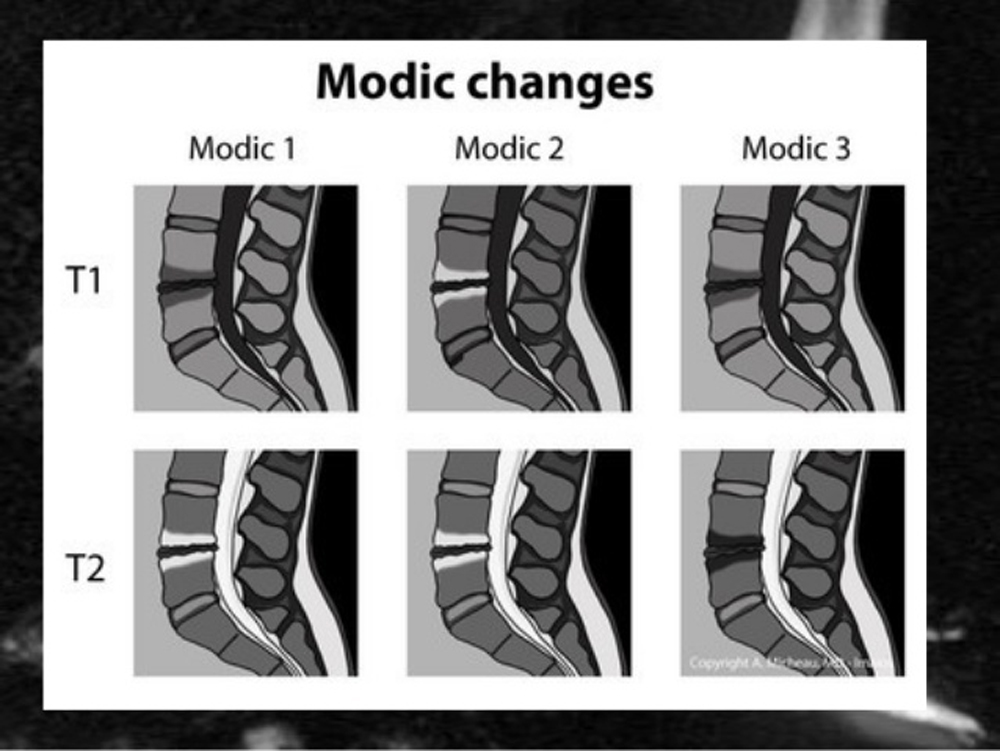Comparison of Treatment Outcomes in Nonspecific Low-Back Pain
Comparison of Treatment Outcomes in Nonspecific Low-Back Pain Patients With and Without Modic Changes Who Receive Chiropractic Treatment
SOURCE: J Manipulative Physiol Ther. 2018 (Sep); 41 (7): 561–570
Michèle Annen, MChiroMed, Cynthia Peterson, DC, MMedEd, B. Kim Humphreys, DC, PhD
Chiropractic Medicine Department,
Faculty of Medicine, University of Zurich,
Orthopaedic University Hospital Balgrist,
Zürich, Switzerland.
OBJECTIVE: The aim of this study was to determine if there was a difference in outcomes in patients with nonspecific low back pain, both with and without Modic changes (MCs), who received chiropractic care.
METHODS: This prospective outcomes study included 112 patients with low back pain without disc herniation on magnetic resonance imaging. All patients were treated with spinal manipulative therapy. At baseline, the numerical rating scale (NRS) and Bournemouth Questionnaire (BQ) for disability were collected. The NRS, BQ, and Patient’s Global Impression of Change (primary outcome) were collected at the follow-up time points of 1 week, 1 month, and 3 months to assess overall improvement. Magnetic resonance imaging scans were analyzed for the presence of MCs and, if present, classified as Modic I or II. The χ2 test was used to compare the proportion of patients reporting clinically relevant “improvement” between patients with and without MCs and between Modic I and Modic II patients. The unpaired Student t test was used to compare NRS and BQ at baseline and change scores at all follow-up time points.
RESULTS: For the primary outcome measure, the proportion of patients reporting relevant “improvement” (Patient’s Global Impression of Change), and for the secondary outcome measures (NRS and BQ change scores), there were no significant differences between Modic positive and Modic negative patients or between Modic I and Modic II patients.
There are more articles like this @ our:
Low Back Pain and Chiropractic Page
and the:


